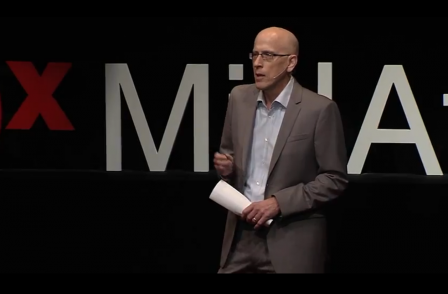
From Sesame Street to Fleet Street was the headline which sprang to mind when US digital media guru Jason Seiken was revealed as the new editor in chief and “chief content officer” of Telegraph Media Group last September.
He had made his name by turning venerable US TV brand the Public Broadcasting Service into a YouTube hit and by launching a host of successful mobile and tablet computer apps.
This week he appeared to flex his muscles for the first time with the news that Daily Telegraph editor Tony Gallagher was out and that his role was being divvied up between existing staff Chris Evans and Ian MacGregor, to edit the paper on weekdays and at weekends respectively.
The fact that their roles were described in the statement as “print" jobs suggests that seven years after former editor Will Lewis integrated print and online editorial amid much fanfare, the Telegraph could now be advocating a more Daily Mail-style approach with separate print and digital teams.
So with Gallagher gone, does Seiken have what it takes to lead the UK’s best-selling and most profitable quality newspaper into the digital era?
The first thing to note is that, although Seiken has dual US and UK citizenship, he is American – which is quite a departure for the newspaper of the British right-wing establishment.
While he hasn't worked solely in print for two decades, he has ample print newspaper experience on his CV.
He studied for a BA in politics at Union College in New York and took his first journalism job working on The Patriot Ledger, a daily title covering the suburban communities to the south of Boston. Starting off as a reporter he spent 10 years on the title and worked his way up to become editor of the paper’s City and West editions.
Seiken spent a year at Stanford University in 1993/1994 as one of 12 US journalists selected for a John S Knight journalism fellowship that year. Based in the business school – the course focuses on innovation, entrepreneurship and leadership.
After that he was in at the start of the internet era when he became founding editor of Washingtonpost.com. He pursued what he saw as a strategy of interactive content there, rather than just republishing what had appeared in the newspaper.
In 1997 he joined internet portal AOL as vice-president in charge of programming operations.
On his LinkedIn profile he boasts that over four years in charge of content across AOL.com he: “Helped drive explosive growth in advertising revenue to more than $2 billion (including several individual deals of more than $100 million each) by collaborating with Sales, Marketing, and Business Affairs to develop creative solutions for content and advertising partners.”
In 2001 he moved over to become vice president, content and programming, of AOL Europe and was based in London. There, he says that he: “Drove traffic gains and monetisation that contributed to the division’s two-year turnaround from $600 million annual loss to profitability.”
Six years later he returned to the US where he joined PBS as general manager for digital and it was there that he established a reputation as something of a digital guru.
He addressed a TED conference in 2012 talking about how he set about shaking things up at PBS: “We wanted to have a start-up mojo…Be faster moving, take risks, be creative…
“After a couple of years it led us to a place where we were able to autotune Mister Rogers [see below…the late Mr Rogers was something of a US children's TV institution].”
Seiken said: "In order to change an organisation you have to be both radical and incremental.
“Start not with a revolution but with an insurrection. We went radical by rewriting the PBS interactive mission statement to two words: Reinvent PBS. It doesn't’ get much more radical than that.”
Former chief content officer of PBS John Boland recruited Seiken to the network. He describes Seiken as "an innovative leader, brilliant new-media strategist and change agent who has demonstrated the ability to 'sell in' bold changes across a complex system like PBS".
Telegraph management has been talking about "digital revolution" since 2006. It must be a dizzying place to work at times, but as we all know – no-one in the media business can afford to stand still these days.

So what form can we expect the next stage of the Telegraph's revolution, or "insurrection", to take?
Seiken said in a statement yesterday: "We must reinvent the way we work and move beyond simply putting news and information online and be an essential part of the audience’s lives."
It's anyone's guess what that means, and I am sure Seiken will soon further elaborate – but I suspect there will be more emphasis on "news you can use" like interactive school league tables and other information and data which lies outside the traditional definitions of news, features and comment.
There was shock this week at Gallagher’s departure. He is clearly a great news journalist and under his watch Telegraph Media Group made a profit last year of £58.4m.
But with print circulation of the Daily Telegraph nearly halving over the last decade and the online audience growing 15-fold it is not surprising that owners the Barclays are staking the future of their prize media asset on a digital journalist.
The fact that Seiken's experience is as a commercial leader, as much as an editorial one, reflects the fact that today most editors have to run a business as well as a newsroom.
Email pged@pressgazette.co.uk to point out mistakes, provide story tips or send in a letter for publication on our "Letters Page" blog
